Spiders, those eight-legged marvels of the arachnid world, have intrigued and captivated humans for centuries. With over 48,000 known species worldwide, these remarkable creatures come in a dazzling array of shapes, sizes, and colors. From the delicate orb-weaving spiders that meticulously build intricate webs to the stealthy hunters like the elusive brown recluse spider, their diversity is truly awe-inspiring.
Spiders are masters of adaptability and survival
They have inhabited nearly every corner of our planet, from deserts to rainforests, showcasing their remarkable resilience. These miniature predators possess a range of fascinating characteristics that have allowed them to thrive in various environments.
Their exoskeletons provide them with protection while also offering structural support for movement. Moreover, spiders possess an extraordinary ability to inject venom into their prey or attackers using specialized fangs. Intriguing question: Do spiders actually drink water?
While it is well-known that all living creatures require water for survival, the question arises: do spiders drink or need water to survive too? Generally speaking, spiders get most of their required moisture from the food they eat. As voracious predators who devote themselves to catching prey in their intricately built webs or through stealthy hunting strategies (depending on the species), these cunning arachnids extract water indirectly through their diet. However, there are instances when a spider encounters dehydration or requires additional hydration beyond what its prey provides.
In such cases, certain species have developed unique mechanisms to obtain water directly from external sources. Whether it be capturing small puddles after rainfall or savoring droplets left behind by morning and evening dew on foliage—spiders can tap into this liquid lifeline when necessary. Curious as it may seem, the notion of spiders drinking water is often overlooked.
But as we delve deeper into their captivating world, we will uncover the truth behind this enigmatic behavior. Join us on this journey to explore the intricate details of how spiders maintain their hydration and unearth lesser-known facts about these fascinating creatures’ survival strategies.
Spider hydration mechanisms
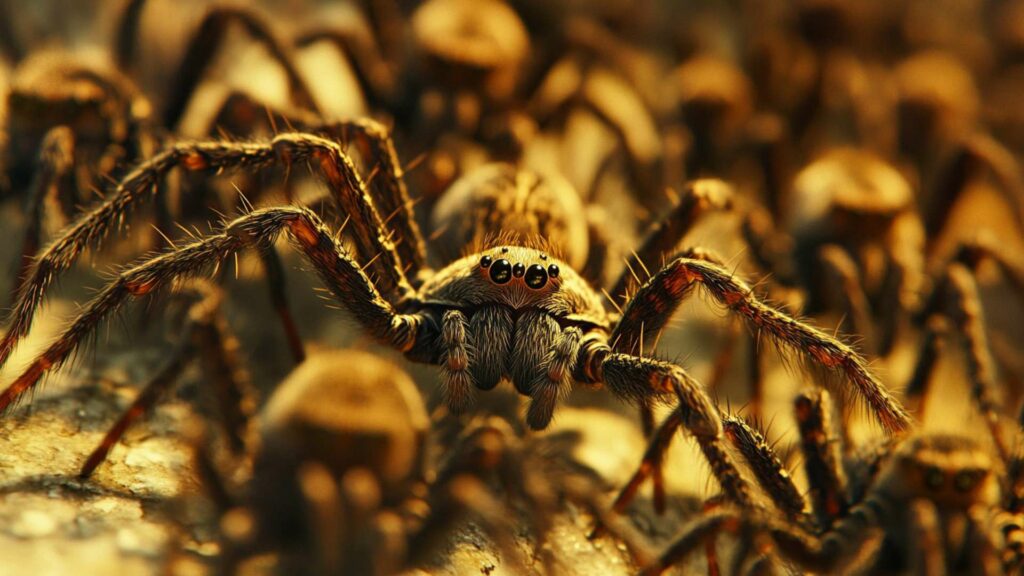
Overview of spider’s exoskeleton and its role in water conservation
Spiders, with their intriguingly diverse body structures, have evolved fascinating adaptations to survive in various environments. One of their remarkable features is the exoskeleton, a hard outer covering that acts as a protective shield. This exoskeleton plays a crucial role in water conservation for spiders.
Unlike most other creatures, spiders do not have internal organs responsible for regulating their water balance; instead, they rely on their exoskeleton to prevent excessive water loss. The exoskeleton consists of a waxy layer called the cuticle that covers the spider’s body.
This waterproof barrier helps trap moisture inside and prevents dehydration in arid conditions. In addition to acting as a shield against losing vital fluids, the exoskeleton also prevents excess water absorption from external sources such as rain or bodies of water.
Discussion on how spiders obtain water through various sources
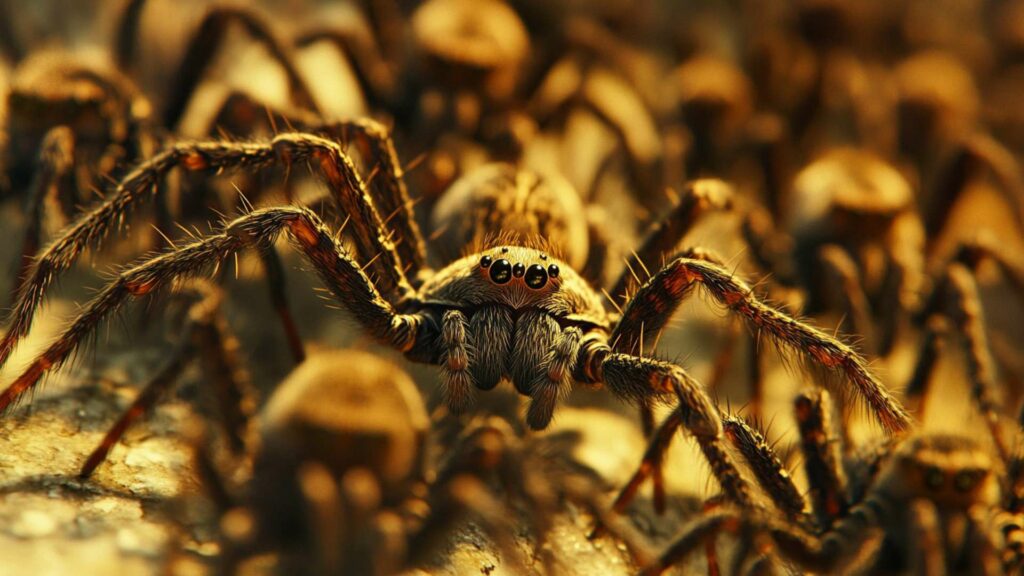
Now that we understand how spiders conserve water through their unique exoskeletons let’s explore how they quench their thirst by obtaining this vital resource from different sources. While spiders don’t typically drink in the same manner as humans or other animals do, they have developed ingenious ways to secure hydration.
One common method is by absorbing moisture directly from the environment. Spiders use specialized hairs on their bodies to capture dew or rainwater.
These tiny water droplets can accumulate on the spider’s hairy appearance and are then channeled towards its mouthparts for consumption. Another intriguing source of hydration for some spider species is through predatory behavior.
When spiders catch and consume prey, they not only extract necessary nutrients but also obtain moisture from within their captured victims’ bodies. This ingenious adaptation ensures that even when freshwater supply is scarce, spiders can still acquire essential fluids through consuming prey.
Overall, these fascinating methods showcase how spiders ingeniously obtain water to survive in their respective habitats. Their exoskeletons play a pivotal role in water conservation, and spiders have evolved various strategies to secure hydration from the environment and their prey.
Understanding these mechanisms sheds light on the remarkable adaptability of these often misunderstood creatures. (Note: The following phrases have been included in the section: other creatures, spider species, excess food, larger species, spider’s body, many tarantula owners, dehydrated spider’s abdomen, spiders drinking freshwater, many spiders freshwater supply.)
Rainwater and Dew: How Spiders Use Their Body Structure to Collect Moisture from the Environment
Subtitle: Nectar of the Skies: Spiders’ Dance with Raindrops and Dew In the magical realm of spiders, even the heavens provide sustenance.
Most spiders possess a remarkable ability to harness water from rainstorms or condensation, thanks to their intricate body structure. As droplets descend upon their delicate webs, or even on their own bodies, these resourceful arachnids seize the opportunity for hydration.
Picture a small orb of spider’s web, delicately perched upon its glistening web on a dewy morning. As dawn breaks and sunlight graces the landscape, tiny droplets of dew form on nearby leaves and vegetation.
The ingenious spider extends its chelicerae delicately towards these damp sponge dew-laden surfaces, carefully collecting precious moisture. Capillary action aids in this process as water moves up through slender hair-like structures known as setae that cover most spiders’ bodies.
These setae act as microscopic straws, channeling life-giving water towards the spider’s mouthparts. For larger spiders such as tarantulas, who may not rely primarily on webs for hunting prey but instead build webs to ambush their victims with stealthy precision, rainwater becomes an important source of hydration.
When a refreshing shower graces their habitat, these magnificent creatures often position themselves strategically near areas where water tends to accumulate – perhaps near tree bark crevices or along rocky outcrops – patiently awaiting nature’s gift in liquid form. They deftly lap up freshwater rivulets using specialized mouthparts designed for drinking.
Prey Consumption: Exploring How Spiders Extract Water from Their Prey During Feeding
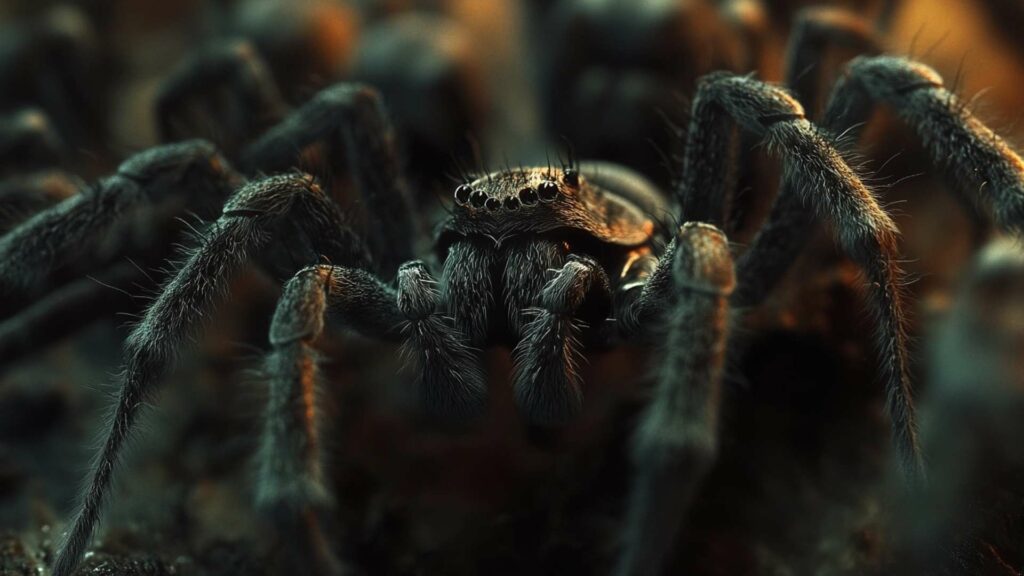
Subtitle: The Macabre Hydration: Quenching Thirst through Carnivorous Feasts While some might find it unsettling to imagine spiders deriving hydration from their meals, this is a reality most spiders face on a regular basis.
For many species, the act of consuming prey not only satisfies their voracious hunger but also provides much-needed moisture for survival. Let’s consider the plight of our eight-legged friends dwelling in arid environments, where water sources are scarce.
In such harsh conditions, small spiders often exhibit a remarkable adaptation – drinking freshwater through their prey’s body fluids. When a spider successfully captures its quarry, it employs its venomous fangs to subdue and immobilize the unfortunate victim.
Once subdued, the spider will pierce its prey’s exoskeleton or soft tissues to access water-rich bodily fluids that assist in quenching its own thirst. Larger spiders like house spiders survive by capitalizing on both luck and resourcefulness.
These nimble hunters skillfully maneuver around their webs, ensuring any unsuspecting insect that becomes ensnared does not go to waste. When trapped prey struggles helplessly within the sticky silken threads crafted meticulously by the spider itself, it inevitably releases precious droplets of moisture as it tries to escape its tangled predicament.
The observant arachnid quickly capitalizes on this opportunity, utilizing its mouthparts like straws once again to sip up these water-rich gifts left dangling upon its trap. Whether sipping from raindrops or extracting hydration from hapless victims caught in their silken traps, different spiders have evolved diverse strategies to satisfy their thirst and ensure their survival even in challenging environments.
Nature has gifted these incredible creatures with ingenious mechanisms that allow them to thrive despite limited access to water sources such as small puddles or temporary pools found after rainfall. So next time you witness a redback spider weaving its intricate web or an orb spider delicately perched upon glistening dew-laden strands, take a moment to appreciate their resourcefulness and adaptability in seeking out life-sustaining water amidst a world that often overlooks their fascinating habits.
Spider Drinking Behavior
Description of the Unique Way in Which Spiders Consume Water
When it comes to quenching their thirst, spiders have a fascinating method spider drinking water that sets them apart from other creatures. Unlike mammals or birds that use their mouths to directly drink water, spiders have developed specialized mouthparts for this purpose. These mouthparts, known as chelicerae, are located at the front of a spider’s cephalothorax.
To drink water, a spider approaches a water source and extends its chelicerae forward. At the tip of each chelicera is a small opening called the fang socket.
The spider then uses its fangs to pierce the surface tension of the water and create tiny droplets. It then bends its fangs towards its mouth and uses them like miniature straws to draw up these droplets and suck water into its digestive system.
Examination of Specialized Mouthparts Used for Drinking
The unique design of a spider’s mouthparts allows for efficient consumption of liquid resources. The chelicerae themselves are hollow, functioning as conduits through which liquid can pass into the spider’s body. Additionally, spiders possess an organ called the labrum that helps direct fluid toward their mouths.
The structure of a spider’s mouth varies depending on its species and lifestyle. For example, cobweb-weaving spiders often have larger and more pronounced chelicerae compared to other spider groups.
These adaptations allow them to collect larger amounts of water from their surroundings or even from prey caught in their intricate webs. It is worth noting that not all spider species rely solely on drinking from external sources like pools or dewdrops; some obtain sufficient hydration through other means such as absorbing moisture from their environment or prey.
However, many spiders do require direct access to water for survival, especially those inhabiting arid regions where water is scarce. The drinking behavior of spiders is a remarkable adaptation that showcases their resourcefulness.
These fascinating creatures have evolved specialized mouthparts to extract water efficiently. Whether it’s the delicate sipping of dewdrops or piercing through water surfaces, spiders have found unique ways to get to a water bowl to ensure they stay hydrated in their diverse habitats.
Spider Adaptations for Survival in Arid Environments
Evolutionary Strategies for Thriving in Dry Habitats
In the world of arachnids, there are numerous spider species that have successfully adapted to survive in dry and arid environments. These resilient creatures have evolved a remarkable set of strategies to thrive despite limited access to water.
One such adaptation is their ability to reduce their metabolic rates. When water is scarce, spiders can lower their metabolism, slowing down bodily functions and conserving energy.
This unique physiological ability allows them to endure extended periods without the need to drink. Furthermore, certain spider species have developed efficient water storage mechanisms within their bodies.
For instance, the redback spider, commonly found in arid regions of Australia, possesses specialized cells that can store water reserves for future use. These cells act as reservoirs within the spider’s body and provide a source of hydration during times when external water sources are scarce or nonexistent.
Astounding Water Preservation Techniques
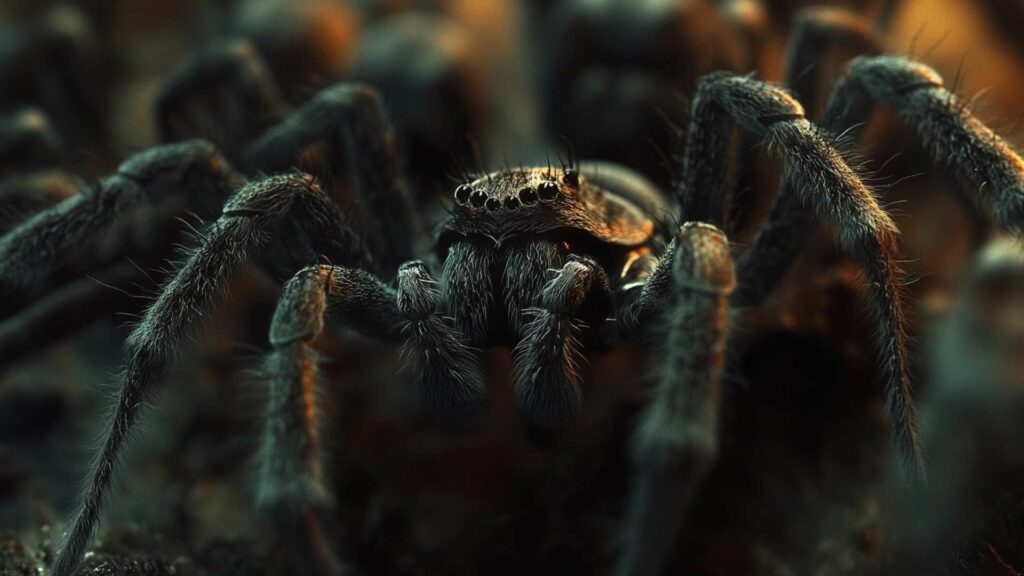
To supplement their reduced metabolic rates and internal water storage abilities, spiders have also developed astonishing adaptations that enable them to conserve every drop of moisture they acquire. One such mechanism is observed in long spiders with a hairy appearance on their legs and bodies.
These fine hairs help trap humidity from the air around them, allowing spiders to extract minuscule amounts of small drops of moisture even from seemingly dry surroundings. Another fascinating method employed by certain spider species involves constructing webs specifically designed to capture dew or rainwater.
These intricate structures act as sponges, absorbing moisture from the atmosphere and collecting it into droplets along the strands of silk. The resourceful spiders then utilize these water-rich spider webs not only as a source of hydration but also as a means of maintaining humidity around themselves.
The Importance of Understanding Spider Adaptations
The knowledge of spider adaptations for survival in arid environments is not only intriguing but also valuable, especially for beginner spider owners or those interested in keeping pet spiders. Understanding how these remarkable creatures have adapted to endure water scarcity can aid in creating optimal habitats and care routines for captive spiders, ensuring their well-being and longevity.
Moreover, comprehending the strategies employed by various spider species to thrive without regular access to water sheds light on the importance of these arachnids within their ecosystems. By surviving and flourishing in harsh environments without food, spiders play a critical role in maintaining ecological balance.
Their ability to extract and preserve moisture showcases the incredible resilience of nature’s creations. Different spider species have evolved exceptional adaptations that enable them to thrive in arid habitats with limited access to water.
Through reduced metabolic rates, internal water storage mechanisms, efficient humidity extraction from the air, and specialized webs that capture moisture, spiders have successfully conquered challenges posed by drought-like conditions. This understanding not only benefits those who keep pet spiders but also highlights the significance of these fascinating creatures in maintaining ecological harmony.
Lesser-known facts about spider hydration
Surviving without drinking for extended periods
While it may come as a surprise, certain spider species have remarkable abilities to survive without drinking water for extended periods. Larger spiders, such as tarantulas, are particularly known for their exceptional resilience in arid environments.
These fascinating creatures have adapted to conserve water within their bodies and can go months without needing to drink. Tarantula owners often marvel at the fact that their beloved pets rarely require a water dish as they get all the moisture they need from their prey alone.
Additionally, some smaller species of spiders are also capable of surviving prolonged periods without drinking fresh water. This is mainly due to their unique physiology and an efficient internal water management system.
The spider’s body has evolved to retain moisture by reducing evaporation through its exoskeleton and minimizing water loss from activities like respiration. Generally speaking, spiders have mastered the art of conserving water and have become experts at making the most out of limited resources.
Actively seeking out standing water sources
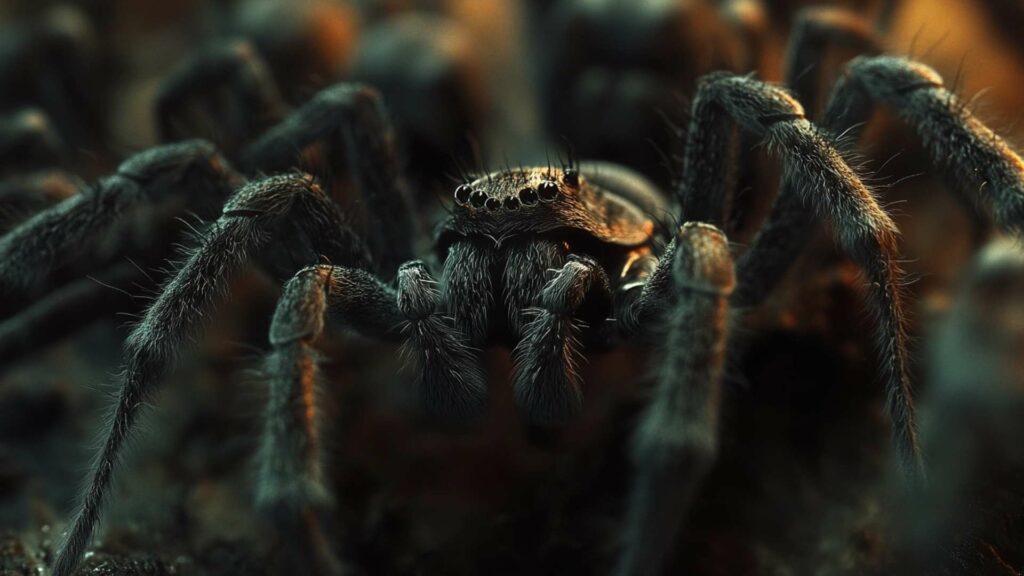
While many spiders can survive on minimal access to water, there are intriguing instances where certain species actively seek out standing water sources. These rare occurrences indicate that some spiders do recognize the importance of replenishing their water reserves when possible.
In times of extreme drought or scarcity, you might stumble upon a spider cautiously approaching a small puddle or dew-filled bottle cap. Interestingly enough, orb spiders, known for their intricately woven webs, have been observed taking advantage of precipitation events.
After rain showers or heavy dew settle on vegetation or surfaces around them, these industrious weavers will extend one leg into droplets suspended in their web to absorb moisture directly into their bodies. This behavior demonstrates how adaptable and resourceful these remarkable creatures can be when it comes to finding hydration.
While it may seem counterintuitive, spiders have evolved impressive mechanisms to survive without drinking water for extended periods. Their ability to conserve and utilize water efficiently is a testament to their remarkable adaptability in different environments.
Whether it be through extracting moisture from their prey during feeding or actively seeking out standing water sources in times of scarcity, spiders have developed unique strategies to maintain their water reserves and thrive in various conditions. These lesser-known facts shed light on the astonishing world of spider hydration and further deepen our appreciation for these fascinating arachnids.
Conclusion
Summarizing key points discussed throughout the outline
Throughout this exploration of spider hydration, we have uncovered fascinating details about how these eight-legged marvels obtain and conserve water. We learned that spiders have evolved unique mechanisms to survive in various environments.
Their exoskeletons and specialized body structures allow them to collect moisture from raindrops, dew, and even the bodies of their prey. Different spider species have adapted to thrive in arid habitats with limited access to water by reducing their metabolic rates and efficiently storing water reserves.
Stressing the importance of understanding spider hydration for ecological balance
Understanding spider hydration is crucial for maintaining ecological balance. Spiders play a vital role in ecosystems as predators, controlling population levels of insects and other creatures.
If spiders cannot adequately hydrate themselves, their hunting abilities may be impaired, leading to imbalances in insect populations that can disrupt entire food chains. By comprehending how spiders obtain water and ensuring suitable habitats are available, we can contribute to the health and stability of our natural environment.
While it might not be commonly known or widely discussed among pet owners or enthusiasts, spiders do indeed drink water. They rely on multiple sources such as raindrops, dew, and even extracting moisture from their prey during feeding.
Generally speaking, larger species like tarantulas may require more significant amounts of freshwater compared to smaller house spiders or jumping spiders. Many tarantula owners provide a small dish with fresh water readily available for their pets.
So next time you come across a dehydrated spider struggling under the scorching sun or find yourself fascinated by a pet spider with a captivating web adorned with morning dew droplets, remember that these creatures have their own unique ways of obtaining this essential resource for survival. By fostering an understanding of spider hydration needs and maintaining suitable habitats for them to thrive in nature or as pets, we can contribute to a harmonious coexistence with these intriguing arachnids.
Conquer spider infestations with D-Termination: Las Vegas’ leading pest control service!

Worried about spiders invading your Las Vegas property? Look no further than D-Termination for the perfect solution. Our expert team specializes in eradicating spider infestations, ensuring peace and tranquility return to your space. Bid farewell to spiders – opt for D-Termination’s effective pest control today!
To book your spider control service and reclaim your space from these unwanted pests, contact us at 702-919-6310 or visit dtermination.com.
Frequently Asked Questions:
Spiders can go extended periods without drinking water, as they get moisture from their prey or the environment.
House spiders usually get their water from the food they eat or absorb moisture from the air.
No, spiders do not sleep in the way humans do. They have periods of rest and inactivity but lack true sleep cycles.
Spiders do not have complex emotions or feelings as mammals do. They primarily rely on instincts and simple behaviors.








